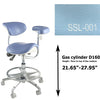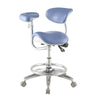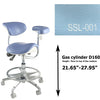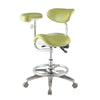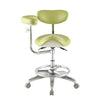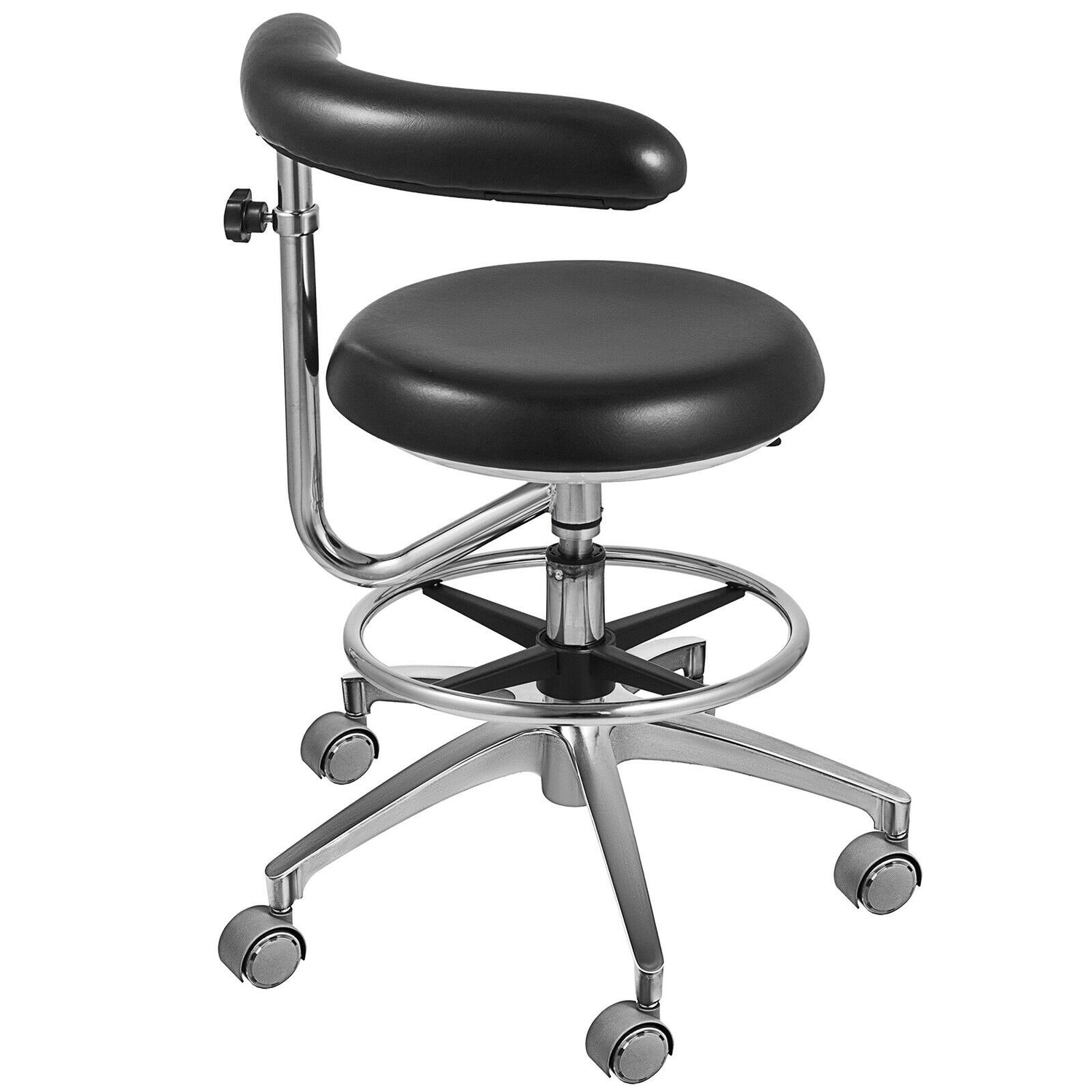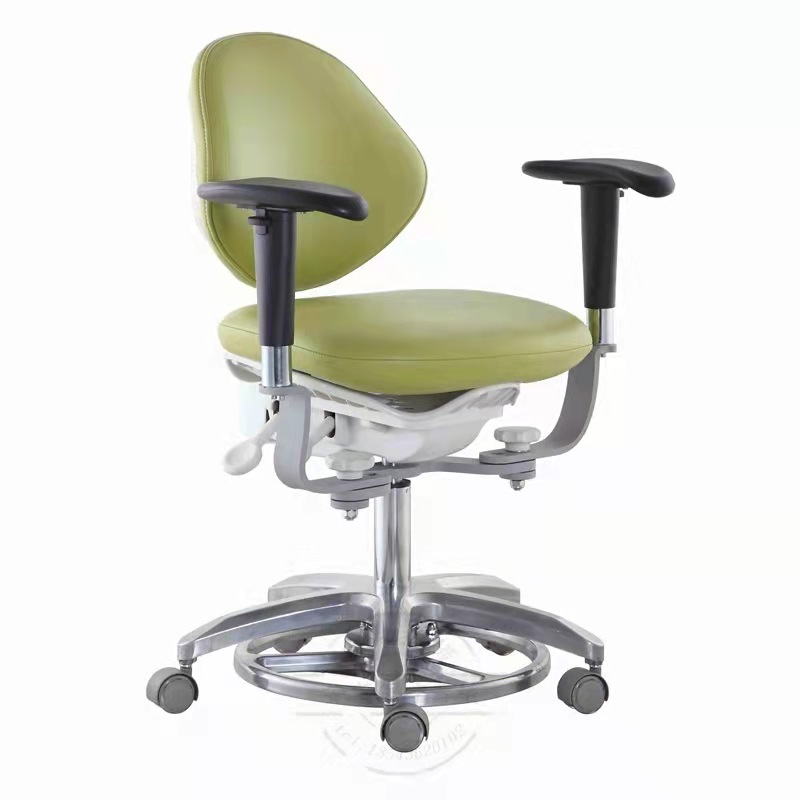Whether you’re a visiting patient or a dedicated dental professional, a day at the dentist’s office stands out as a not-so-comfortable luxury. Yet, despite the dread some may feel, we can all agree that the dental assistant chair plays a pivotal role in your experience.

What you might not realize is that these chairs have undergone a remarkable transformation, evolving from humble beginnings to the high-tech marvels we see today in the clinical setting.
In this informative and engaging blog post, we take a closer look at the evolution of dental assistant chairs — tracking their history, highlighting innovations that have shaped their design and functionality, providing a comparative analysis of traditional versus modern models, and peering into the future of this essential dental equipment.
Tracing the History: The Development of Dental Assistant Chairs Over the Years
In the early days of dentistry, simplicity ruled the roost. Little more than benches with minimal cushioning and manual height adjustment, ‘chairs’ were a far cry from the supportive, ergonomic designs we’re familiar with. It was around the 18th century when dental chairs started to become more than just a piece of furniture, incorporating reclining features to accommodate the patient and ease the dentist’s work.
Fast forward to the 20th century, and dental assistant chairs saw significant changes with the introduction of hydraulic and pneumatic systems, which allowed for more precise and effortless positioning. Comfort, however, was still secondary to function. It wasn’t until recent decades that dental office chairs began blending cutting-edge technologies with superior comfort, meeting the needs of both patient and practitioner.
Key Innovations in Dental Assistant Chair Design and Functionality
The turning point in the evolution of dental assisting chairs came with the emphasis on ergonomic design. Dentistry, more than most professions, demands long hours of often repetitive movements that can lead to musculoskeletal disorders. Orthopedically designed chairs started to address these concerns, with adjustable lumbar support, armrests, and headrests becoming standard features.
Furthermore, the integration of electric motors in modern chairs brought precision movement and additional settings that allowed for a more personalized experience. Innovations such as memory foam cushions, anti-fatigue materials, and touchless controls represent other significant strides in the industry, ensuring that dental assistants can focus on their work without sacrificing their health.
Comparative Analysis: Traditional vs. Modern Dental Assistant Chairs
While traditional dental assistant chairs remain in use in some practices, their shortcomings in terms of comfort and adjustability are evident when compared to newer models. Traditional chairs often lack the ergonomic support needed for long hours of work, leading to discomfort and potential health issues for the dental assistant.
Modern dental assistant chairs, on the other hand, are crafted with the human body in mind. They boast a range of adjustments that cater to individuals of various height and size, and their intelligent designs promote proper posture, which is essential for reducing stress on the body. These chairs are also equipped with integrated technology, such as multimedia support and patient entertainment systems, which enhance the overall dental experience.
The Future of Dental Assistant Chairs: Trends and Predictions
Looking ahead, the future of dental assistant chairs is set to be even more advanced. Manufacturers are exploring the potential of smart chairs that adapt to the user’s movements and offer real-time feedback on posture. We can expect to see further integration with digital dentistry systems, enabling seamless communication between the chair and other equipment in the practice.
Additionally, the global shift towards sustainable practices is influencing the materials used in chair construction. The industry will likely prioritize eco-friendly solutions, ensuring that dental assistant chairs not only enhance the work environment but also contribute to a healthier planet.
How the Right Chair Can Reduce Work-Related Injuries for Dental Assistants
One of the most significant benefits of the modern dental assistant chair is its contribution to occupational health and safety. With ergonomic designs that reduce the risk of work-related injuries and fatigue, these chairs are pivotal in promoting the wellbeing of dental assistants.
Studies have shown that the implementation of ergonomic chairs and equipment can significantly lower the incidence of work-related pain, particularly in the back, neck, and shoulders. By investing in quality dental assistant chairs, dental practices not only improve the working conditions for their staff but also ensure a more sustainable and productive workplace.
In conclusion, the evolution of dental assistant chairs reflects the continuous pursuit of comfort and efficiency in the dental industry. From the pivot dental chair of the 18th century to the sophisticated, high-tech models of today, comfort has taken a front seat without compromising the essential functionality these chairs provide. As we continue to push the boundaries of design and technology, one thing remains clear — the dental assistant chair will always be a symbol of the dental profession’s dedication to delivering the best possible experience for patients and providers alike.
